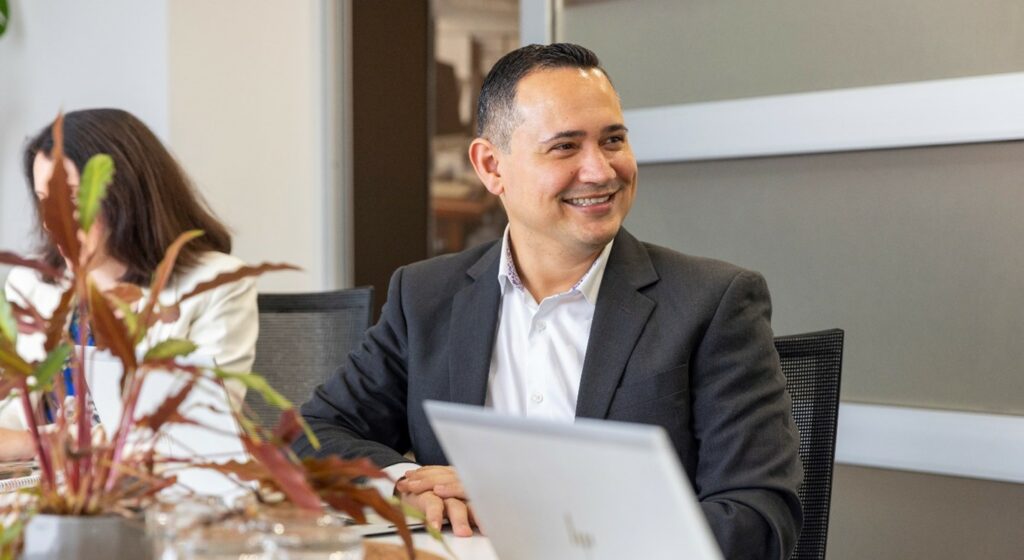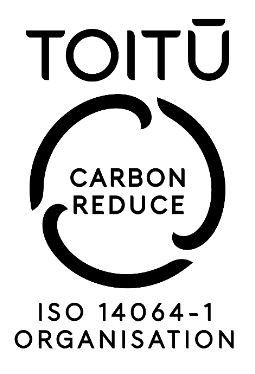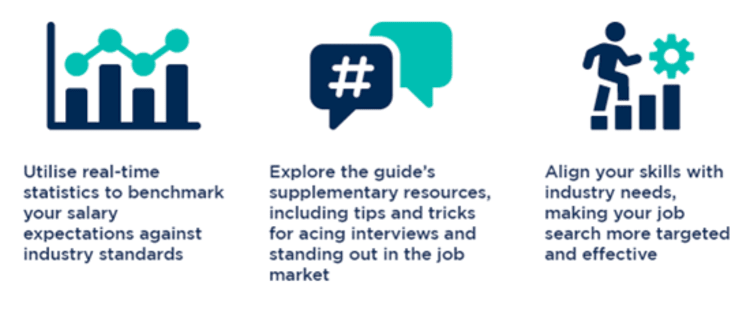
Authored by Linda Oh, Deputy Country Head South Korea, PERSOLKELLY.
Recruiting is changing fast, with artificial intelligence (AI) and automation transforming the way we find and hire top talent. AI algorithms and powerful tools are making talent acquisition quicker and more efficient. However, the human element remains crucial in recruitment —emotional intelligence and human interaction are irreplaceable. This article explores how recruiters can leverage AI without losing their human touch, ensuring an effective and humane recruitment process.
The Integration of AI in Recruitment
AI is now a crucial part of modern recruitment strategies. By integrating AI, recruiters can analyse vast amounts of data quickly and accurately, identifying patterns and insights that were previously unattainable. AI-powered chatbots, for instance, can handle initial screenings of candidate profiles, freeing up recruiters to focus on more complex tasks.
Embracing AI Without Losing the Human Element
While AI offers numerous benefits, it’s essential to maintain the human element in recruitment. Emotional intelligence and the ability to connect with candidates on a personal level are qualities that machines cannot replicate. Recruiters should use AI as a tool to enhance their capabilities, not replace them. This balance ensures that the recruitment process remains empathetic and personalised.
The Benefits of AI Integration
The integration of AI in recruitment brings numerous advantages, such as:
– Efficiency: AI can process applications and identify suitable candidates faster than humans, reducing the time-to-hire.
– Accuracy: AI algorithms can match candidates’ skills and experience to job requirements with high precision, minimising human error.
– Scalability: AI tools can handle a large volume of applications, making it easier for recruiters to manage extensive hiring campaigns.
– Bias Reduction: Properly programmed AI can help eliminate unconscious biases, promoting fairer and more inclusive hiring practices.
Powerful Tools for Modern Recruiters
AI provides recruiters with powerful tools that streamline various aspects of the recruitment process. From sourcing candidates to scheduling interviews, AI can handle repetitive tasks efficiently. For example, AI-driven platforms can carry out tasks such as resume screening and matching candidates with job descriptions, saving time and reducing human error. By leveraging these tools, recruiters can focus on building meaningful relationships with candidates.
Leveraging AI for Data-Driven Decisions
One of the significant advantages of AI in recruitment is its ability to facilitate data-driven decision-making. AI algorithms can analyse vast amounts of data, providing data-driven insights into candidate suitability, market trends, and hiring success rates. This data-driven approach allows recruiters to make informed decisions, improving the overall quality of hires and enhancing the recruitment process.
Examples of Data-Driven Recruitment
Data-driven recruitment involves:
– Predictive Analytics: Using historical data to predict a candidate’s future performance and retention likelihood.
– Talent Mapping: Identifying potential candidates for future openings based on current market trends and data.
– Performance Metrics: Analysing data from previous hires to refine job descriptions and recruitment strategies, ensuring better matches in the future.
The Role of AI-Powered Chatbots
AI-powered chatbots and virtual assistants are becoming increasingly common in recruitment. These chatbots can engage with candidates, answer queries, and even conduct preliminary interviews. By automating these initial interactions, recruiters can save time and focus on more critical aspects of the hiring process, such as assessing cultural fit and emotional intelligence.
Enhancing Candidate Experience with Chatbots
Chatbots improve candidate experience by:
– Immediate Responses: Providing instant answers to candidate questions, improving engagement and satisfaction.
– 24/7 Availability: Allowing candidates to interact with the recruitment process at any time, regardless of time zones.
– Streamlined Scheduling: Automatically coordinating interview times, reducing the back-and-forth between candidates and recruiters.
Focus on Building Meaningful Human Connections
Despite the rise of AI, the importance of human connections in recruitment cannot be overstated. Building meaningful relationships with candidates is essential for understanding their motivations, aspirations, and cultural fit. Recruiters should use AI to handle administrative tasks, allowing them to dedicate more time to fostering these connections and ensuring a positive candidate experience.
Human Interaction in Recruitment
Human interaction remains vital as it allows for genuine connection and understanding between recruiters and candidates. This direct interaction fosters trust, clarifies expectations, and lets candidates present themselves authentically. Let’s explore on how it is vital:
– Interviewing: Conducting face-to-face or virtual interviews to gauge a candidate’s interpersonal skills and cultural fit.
– Onboarding: Providing a personal touch during the onboarding process to help new hires integrate smoothly into the organisation.
– Networking: Building professional relationships through industry events, social media, and referrals.
AI and Inclusive Hiring Processes
AI has the potential to promote inclusive hiring processes by eliminating biases that often affect human judgment. AI algorithms can be programmed to focus solely on candidate qualifications and experience, ensuring a fair and objective assessment. This approach can help organisations build diverse and inclusive teams, fostering innovation and creativity.
Implementing Inclusive AI Strategies
By addressing the unique needs and challenges of underrepresented groups, inclusive AI can lead to more innovative and effective solutions. Here’s how to implement inclusive AI strategies:
– Bias Audits: Regularly audit AI systems to ensure they are free from bias and discrimination.
– Diverse Training Data: Use diverse data sets to train AI models, ensuring they can recognise and appreciate different backgrounds and experiences.
– Human Oversight: Maintain human oversight to catch any biases that AI might miss and to ensure fair treatment of all candidates.
Ensuring the Human Connection in Data-Driven Recruitment
While data-driven recruitment offers numerous benefits, it is crucial to ensure that the human connection is not lost. Recruiters should use data as a guide, not a replacement for personal judgment. By combining data insights with human intuition and empathy, recruiters can make well-rounded decisions that benefit both the organisation and the candidates.
Balancing Data and Human Judgment
Find the perfect harmony between leveraging data insights and harnessing human expertise to drive sustainable growth and innovation. To balance data and human judgment, consider the following steps:
– Candidate Insights: Use data to gather insights about candidates, then apply human judgment to interpret these insights contextually.
– Feedback Mechanisms: Collect and analyse feedback from candidates and hiring managers to continuously improve the recruitment process.
– Personalised Approaches: Tailor communication and interactions based on data insights, ensuring a personalised candidate experience.
The Future of Recruitment: A Harmonious Blend of AI and Human Skills
The future of recruitment lies in a harmonious blend of AI and human skills. AI can handle routine tasks, analyse data, and provide valuable insights, but it is the human touch that brings empathy, understanding, and personal connection to the process. Recruiters must embrace AI as a powerful tool while maintaining their focus on building meaningful relationships with candidates.
Cultural Fit and Emotional Intelligence
Assessing cultural fit and emotional intelligence are areas where human skills excel. AI can identify candidates with the right qualifications, but it takes a human to determine if a candidate aligns with the company’s values and culture. Recruiters should use AI to narrow down the pool of candidates and then rely on their interpersonal skills to select the best fit for the organisation.
Preparing for the Future
To prepare for the future of recruitment:
– Continuous Learning: Stay updated with the latest AI advancements and best practices in recruitment.
– Training Programs: Implement training programs to help recruiters effectively use AI tools and develop their human skills.
– Feedback Loops: Establish feedback loops to continually refine AI systems and human interactions, ensuring an optimal recruitment process.
Conclusion
AI and automation are changing the recruitment game, making processes more efficient and decisions more data-driven in this competitive job market. But even with these advancements, the human touch is irreplaceable. Recruiters should use AI to handle routine tasks and provide insights, freeing them to focus on building genuine connections with candidates. By embracing AI without losing the human touch, recruiters can create a more effective, empathetic, and inclusive recruitment process.
If you’re passionate about blending technology with human interaction in the recruiting world, join our team! We embrace AI in our daily tasks while maintaining the human connection that makes our recruitment process truly exceptional. Be part of the future of recruiting and help us shape a more efficient and humane hiring landscape. Apply today!




